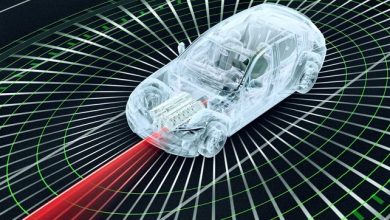The Data-Wide-Web of Automotive World

Like any other sector, any other industry, Data has taken centre-stage in automotive world too. Automotive Industry has gone through various stages of evolution and revolution. Till about mid 90s or so, most of the innovations were on mechanical front – the engineering, design, production etc. then slowly electrical engineering and electrical systems started capturing their own bit of innovation. Around 2000 or so, the Electronics world started playing its role, and started stealing most of the innovation budget in Automotive new innovations. And now, in last few years, it is the data, data enabled services, analytics that is playing major role in almost every area related to Automotive – Sales, Marketing, Production, Customer Experience, Connecting with End Customer, Resale, Aftermarket and so on.
Following picture depicts, a related size of data in the context of other data related applications
Remember – the above picture is referring to just connected car services. In the context of Autonomous vehicle or some high end connected car services the volume may go upto dealing with 4000 GB per day, per car data. And it is not just sheer volume, there is a huge complexity in the variety of this data too. Sensors data, GPS data, Camera inputs, Images, Radar data, Sonar data, Lidar data and what not. That’s the sort of volume and variety we are talking about.
Application Areas
Most of the touch points in the whole lifecycle of vehicle – from concept to retirement, have applicability and different set of use-cases for data enabled services. These areas can broadly be classified in following categories :
- Product Development, Design and Manufacturing – in a number of ways such as preventing design errors, tracking changes in design, quality of the work, managing entire production and manufacturing process – improving quality as well as reducing cost.
- Supply Chain — minimize risk & maximize growth by optimizing the entire supply chain system. Identification of right vendors and partners, implement the state of the art just in time approach and so on.
- After-Sales, Warranty & Dealer Management — After sales support, Ontime, on-demand services, prognostic services, fuel management, fleet management, performance data analytics etc.
- Marketing, Sales & Other Applications — Planning for overall marketing spending, targeting, strategizing for best marketing outcomes, understanding competitor marketing strategy and counter those. Understanding customer buying patterns and so on.
- Connected Vehicles & Intelligent Transportation — A whole host of connected vehicle services, some of which are detailed more in Usecases section
- Quality Analytics — Understand quality related flaws & resolve that at a very early stage of product manufacturing
- Vehicle Financing
Use Cases
There are hundreds of usecases, Data production and consumption is done under-the-hood, by those tens of ECUs connected to different data collection and controlling devices, such as sensors, camera, GPS devices, Lidars and so on. Data production and consumptions is also done above the hood for a whole host of connected car and Infotainment services. Much of the data produced is hosted and consumed locally without much interaction with the cloud. However, indeed there is partial data that is stored in the cloud, and exchanged between vehicle and OEM or other service providers. Some examples of different usecases are
- Automotive Insights for Design and Production
- Product Design & Planning
- Predictive Maintenance & Real-Time Diagnostics
- Parts Inventory & Pricing Optimization
- Supply Chain Management
- Dealer Management & Customer Support Services
- UBI (Usage-Based Insurance)
- Autonomous & Semi-Autonomous Driving
- Intelligent Transportation
- Fleet Management
- Driver Safety & Vehicle Cyber Security
- In-Vehicle Experience, Navigation & Infotainment
- Ride Sourcing, Sharing & Rentals
- Marketing & Sales
- Customer Retention
- Third Party Monetization
- Supply Chain improvement
Data Sources – When we talk of automobiles, there are a number of sources internally to auto machinery as well as outside, who are creating, manipulating and using the data. There are thousands of parts in auto machinery. A lot of these parts are generating a lot of data bundles.
Autos are running on the road, where they have opportunity to talk to other elements on the road such as adjacent vehicles, road side infrastructures, the signal, and so on. People are using and sitting in automobiles, so automobiles have opportunity to get data from these people, and finally their creators, manufacturers — OEMs, Tier –I, II providers, Service providers and so on. Each of these objects practically work as Data source for automotive.
Data Collection Techniques
The data collected from automobiles can be simple sensor based techniques to record and monitor performance, maintenance and behavior of critical automobile systems, or more sophisticated GPS and satellite based techniques such as tracking vehicle position and recording external conditions.
Data collection techniques for automobiles gained maturity over the years by using current technology offerings like mobile devices, wearables, Big Data, Business Intelligence, Cloud and Social Media. The major focus of these collection techniques was to improve customer experience and achieve better vehicle health.
Standardization and regulatory initiatives
As this whole thing is taking a massive shape and now likely to become the mainstream for automotive lifecycle, the need for standardization and regulation automatically arise. Trust issues, interworking issues, ownership issues, retention v/s destruction issues and so on. Cyber security, especially security along with safety and privacy are likely to be the key areas of topic, in fact they already are. Several frameworks across geography have emerged. A number of industry forums have been created to discuss and iron-out these issues and workings.
Challenges
Dealing with data, Giga, Terra, Peta bytes of data is never without challenges, be it in any domain. With automotive, the complexity and the amount of these challenges only increase rather than reducing.
Industry stalwarts are still struggling with several burning issues. Questions such as “Whose Data is it anyway?”, “What is the right size, frequency, type…etc of the data to be collected?”, “Are we morally right to collect, store, use it internally, and eventually sell the data?”, “Who pays for the maintenance, collection and services of the data enabled services?”, How to monetize the data, and so on… Several such questions needs to be answered. And this is an ongoing process.
Author:

Anil Gupta
Co-founder
Magnos Technologies LLP
Anil Gupta, Co-founder of Magnos Technologies LLP. He has about 25 years of experience in Connected Cars, Connected Devices, Embedded software, Automotive Infotainment, Telematics, GIS, Energy, and Telecom domain. Anil is MS in Computers and Software Engineering from Illinois Institute of Chicago. Currently pursuing his interest in technology, finance and investments — publishes several articles around these topics.
Published in Telematics Wire


